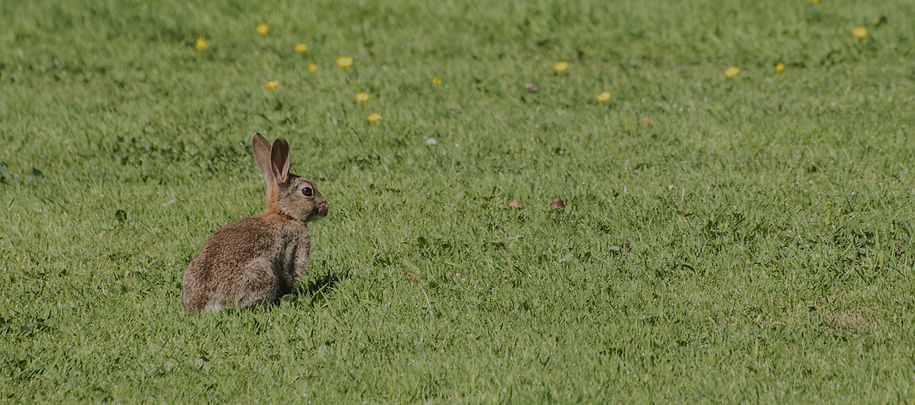
Rabbits
usually a beloved family pet, an unwanted rabbit population can cause untold damage to property and gardens. Also disease carrying they pose a strong health hazard when not dealt with effectively.
Full Guard understand most people do not want to harm rabbits so always try to implement the most humane treatments where we can and offer effective preventative solutions where necessary. On agricultural land rabbits per hectare decrease production yield by roughly 1% per rabbit left alive. This can have a devastating impact in commercial situations. Landowners are obliged by law to control rabbits on their land.
An Order was made under Section One of the Pests Act 1954 by which England and Wales were declared a 'Rabbit Clearance Area'.This means, every occupier of land is responsible for destroying wild rabbits on his/her land or for taking steps to prevent them causing damage
Resident all over the UK, wild rabbits are primarily found in the countryside throughout woodland areas and moorlands. However, you can also spot them in towns and cities such as on roadsides and of course in gardens. During the breeding season, between January and August, the female rabbit can produce as many as three to seven young every month! That's upwards of 40 offspring per female... we all know the expression!
INFESTATION IDENTIFICATION
Revealing Rabbits
RABBIT DROPPINGS
Droppings, you will usually find small piles of round, brown droppings, about 1cm in size. If you find tubular shaped droppings, they are more likely to be from a rodent.
RABBIT BURROWS
Usually around 10-15cm in diameter. Burrows lead to an extensive network underground. Rabbit droppings, and fur at the entrance are also a good indicator.

What is the difference between rabbits and hares?

rabbits
The smaller rabbit generally looks less streamlined than their athletic cousins. They are also much more sociable, favouring larger groups known as a colony.
Rabbits are very alert to danger and will thump hind legs on the group to warn others of approaching threat. When in danger, a rabbit will bolt for its nearest hole.

hares
Larger than a rabbit, a hare has proportionally longer ears and back legs than a rabbit. Its ears have a black tip.
In contrast to their smaller friends, hares live singly or in very loose groups.
Very fast, hares can run at up to 50 mph over short distances which makes it the fastest-running wild mammal in Britain.



